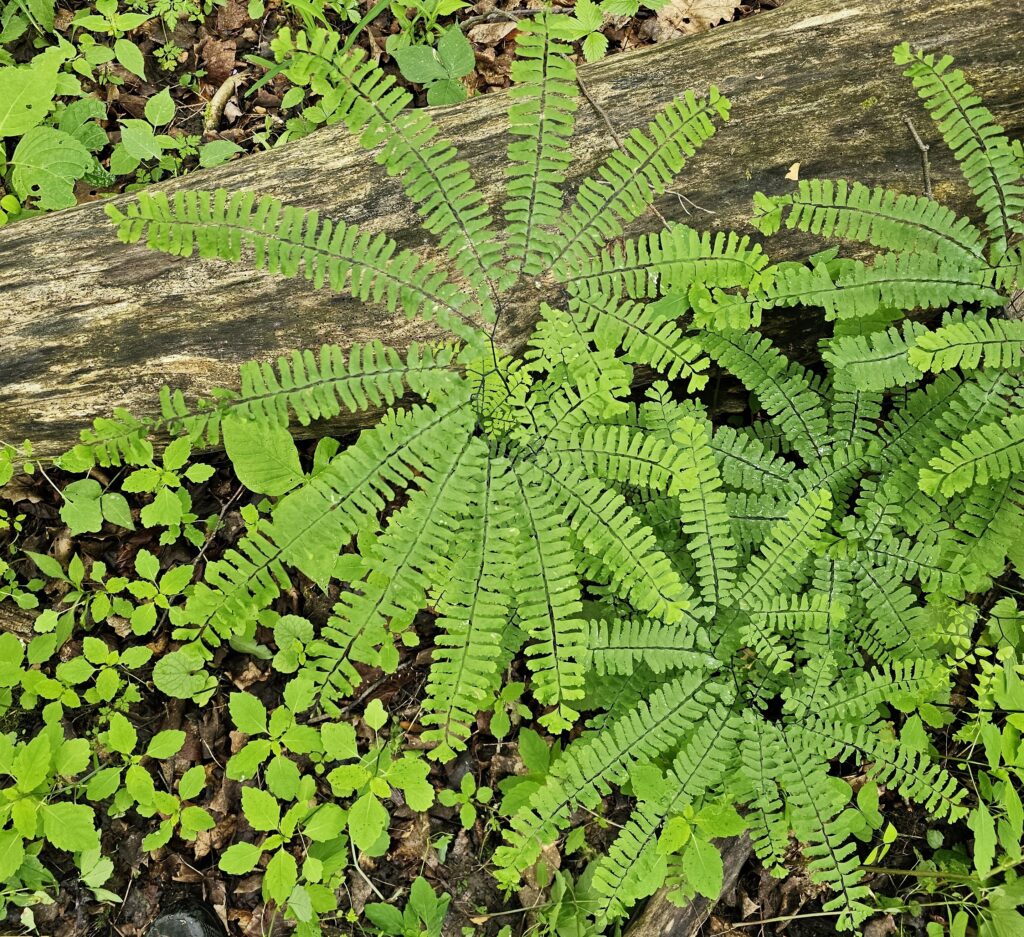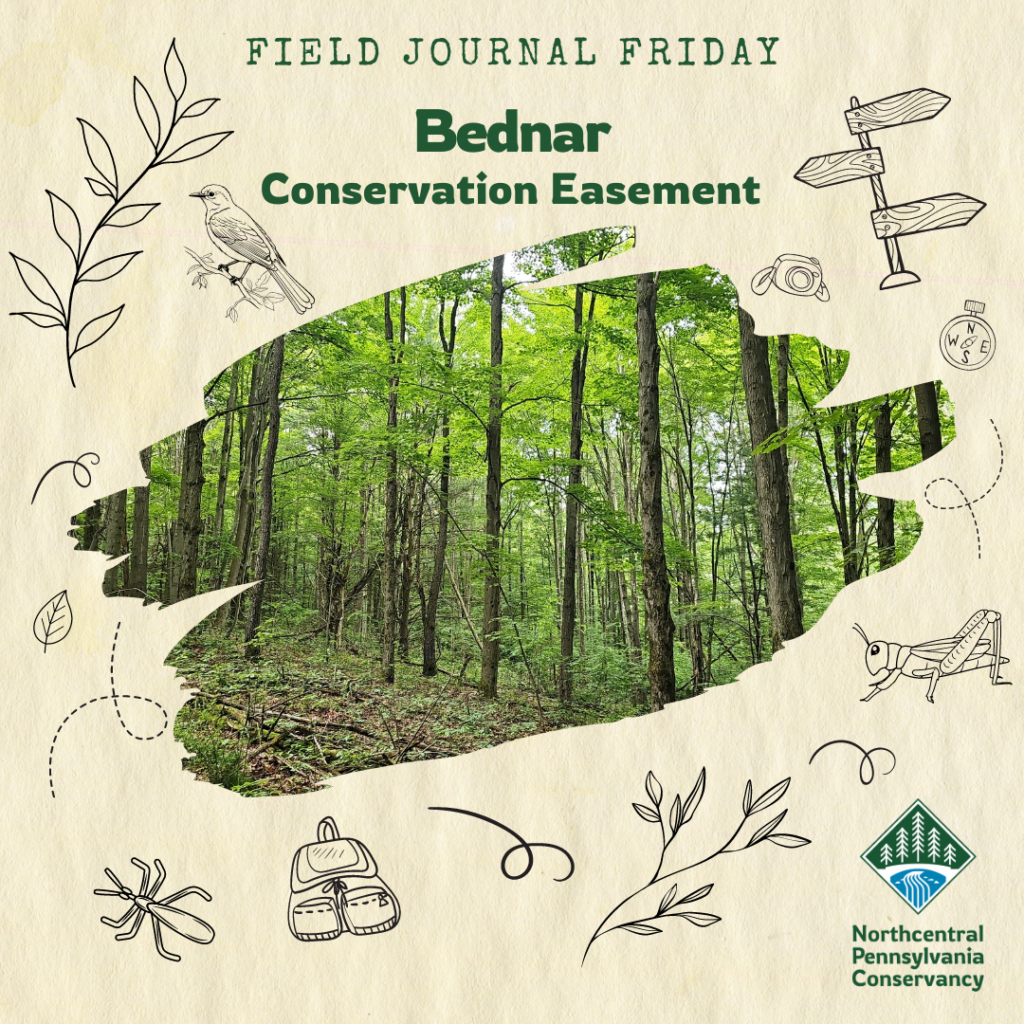
The Bednar conservation easement conserves a variety of habitats, including a small wetland, open fields, old fields reverting to forest, stone walls, and extensive acres of mature forest. These support a wide array of wildlife and plants. The property’s high point offers stunning views across rolling hills and valleys, adding to its scenic appeal.
Here are few of Sara’s finds from her recent visit:
Observation #1: Oak Besma Moth
Oak besma moth (besma quercivoraria) is native to PA and can be found throughout North America. Its name translates to “oak-eater”. Common in deciduous and mixed woodlands, the larvae feed on leaves of oak, elm, poplar, and willow. Their pale brown lines and speckles create the illusion of tree rings and texture, which is a beneficial camouflage to hide from predators.
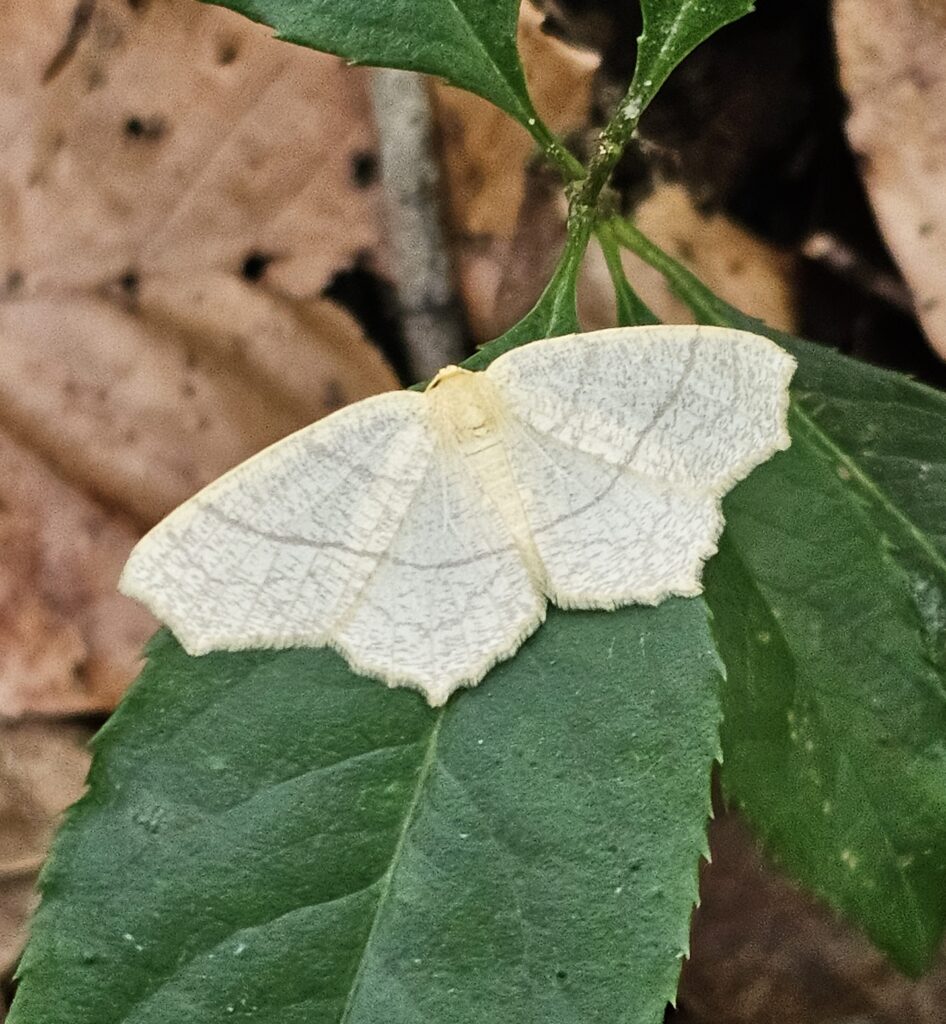
Observation #2: Eastern (red-spotted) Newt
The Eastern (red-spotted) newt has a fascinating life cycle! Seen here in its “Red Eft” stage, this PA native amphibian embarks on a remarkable journey of transformation, that takes it from water, to land, and back to the water!
- Egg Stage: It all begins as tiny eggs are laid in shallow, freshwater habitats like vernal pools.
- Larval Stage (Aquatic): Hatching from the eggs, Eastern newt larvae emerge, resembling small tadpoles. They breathe through gills and spend their early days in the water.
- Red Eft Stage (Terrestrial): After several months, the larvae undergo a transformation into their land-based stage known as “red efts.” The red eft is easily recognizable with its bright orange coloring and rows of black-ringed spots. While that coloration may look pretty to us, it serves as a warning to other animals that these guys are not a tasty snack! They develop lungs for breathing air and begin their adventures exploring the forest floor.
- Adult Stage (Aquatic): As they mature, red efts transition back to the water. Their skin darkens, and they transform into the adult phase of the Eastern newt. Returning to forest ponds, they spend the rest of their lives in the water, where they reproduce and continue the life cycle.
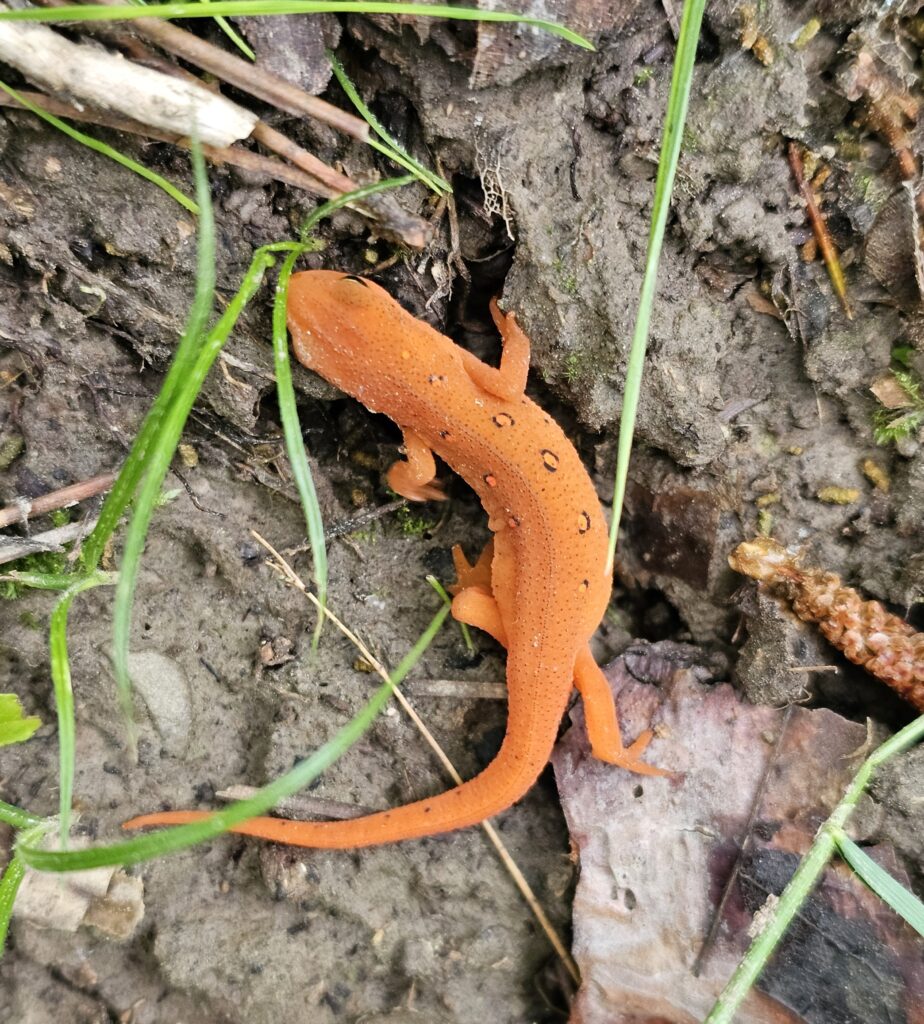
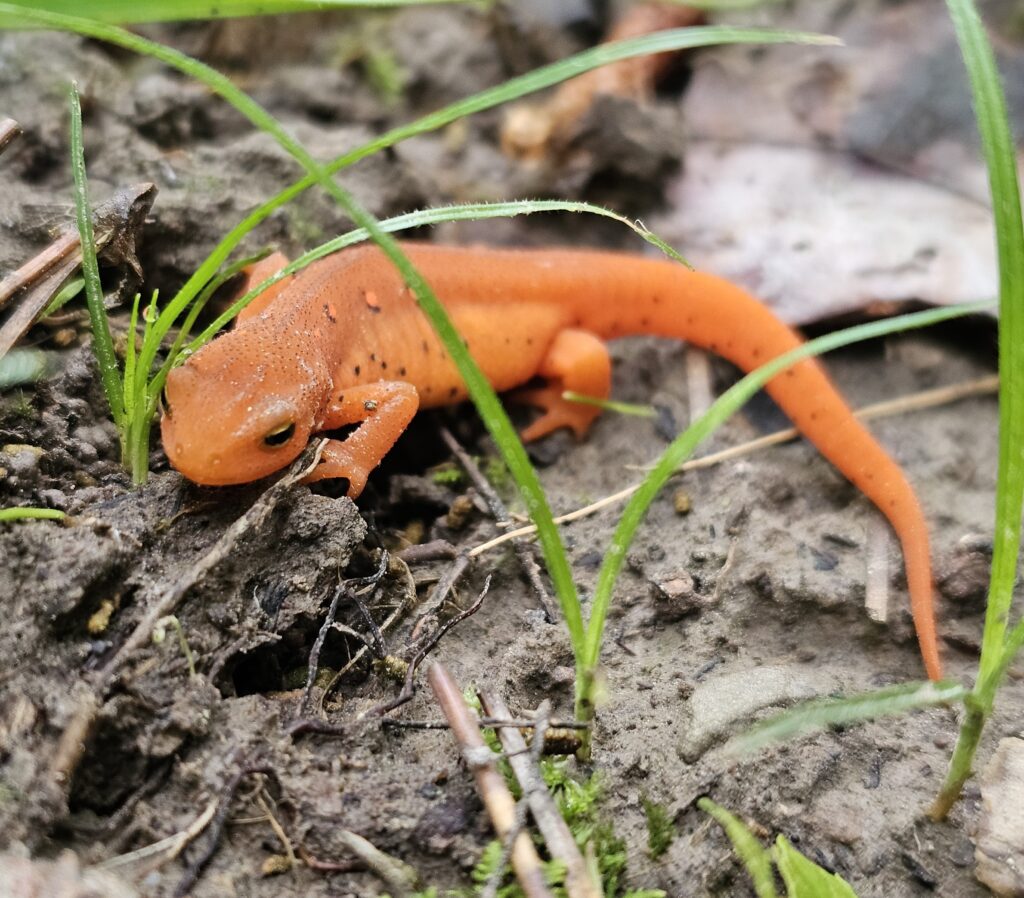
Observation #3: Sounds of Nature
While observing this mature Eastern (red-spotted) Newt swimming around the pond, Sara heard a chorus of several other species, including a Redwing Blackbird, Ovenbird, Gray Catbird, and the single croak of a green frog.
Observation #4: Gray Catbird
Gray catbirds (Dumetella carolinensis) are relatively common throughout most of the United States. They are particularly abundant in areas with early successional forests, which include abandoned farmland, thickets of young trees, and dense shrubs. These habitats provide the dense cover and abundant food resources that gray catbirds prefer.
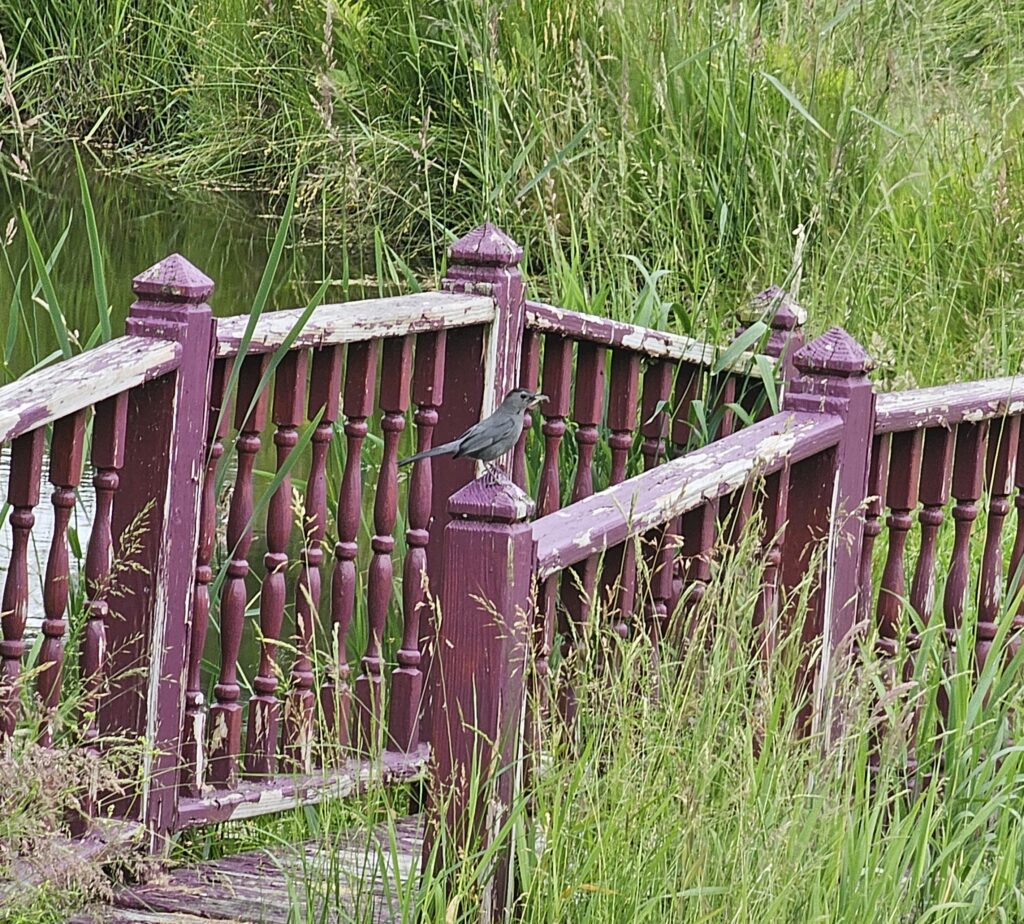
Observation #5: Northern Maidenhair Fern
The northern maidenhair fern (Adiantum pedatum) is easily identifiable by its unique structure, which features pinnae (divisions of compound leaves) forming a nearly perfect horizontal circle. This distinctive arrangement makes it stand out among other ferns. It is a native, deciduous perennial that thrives in cool, moist, and rich woods as well as shaded areas.
